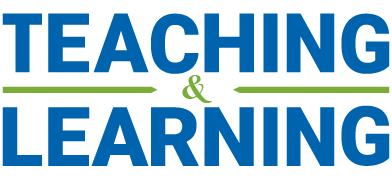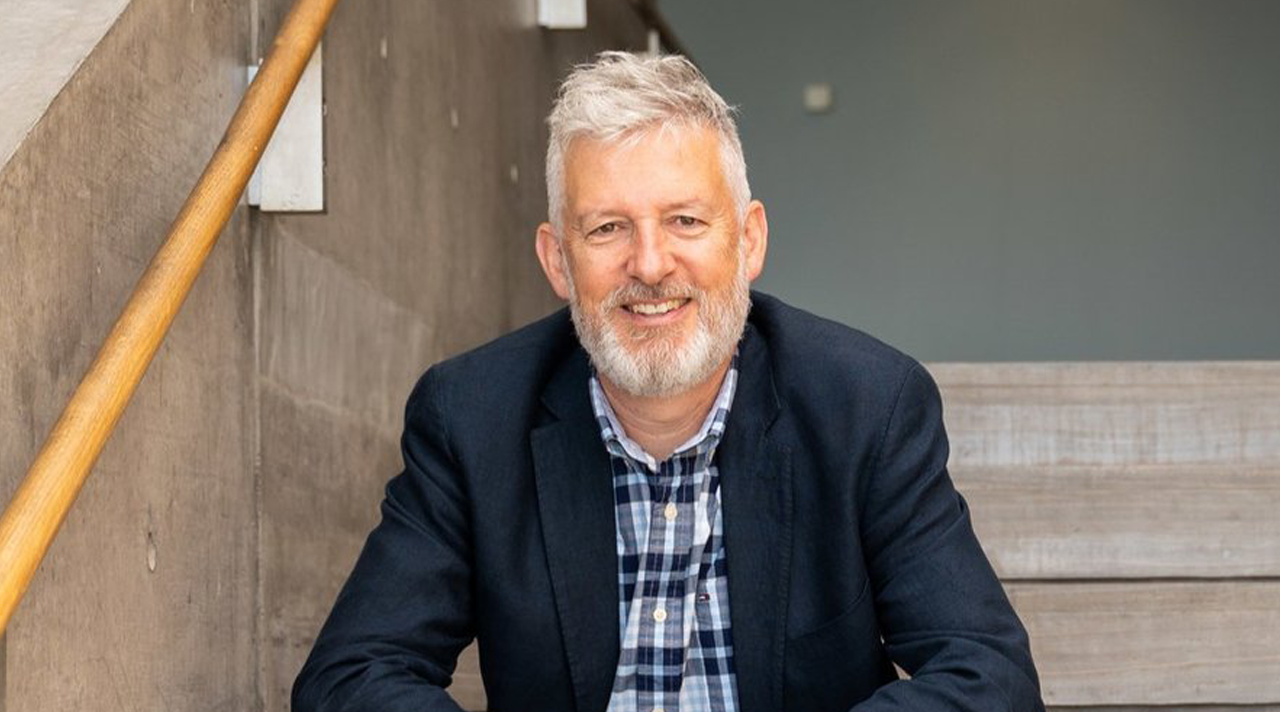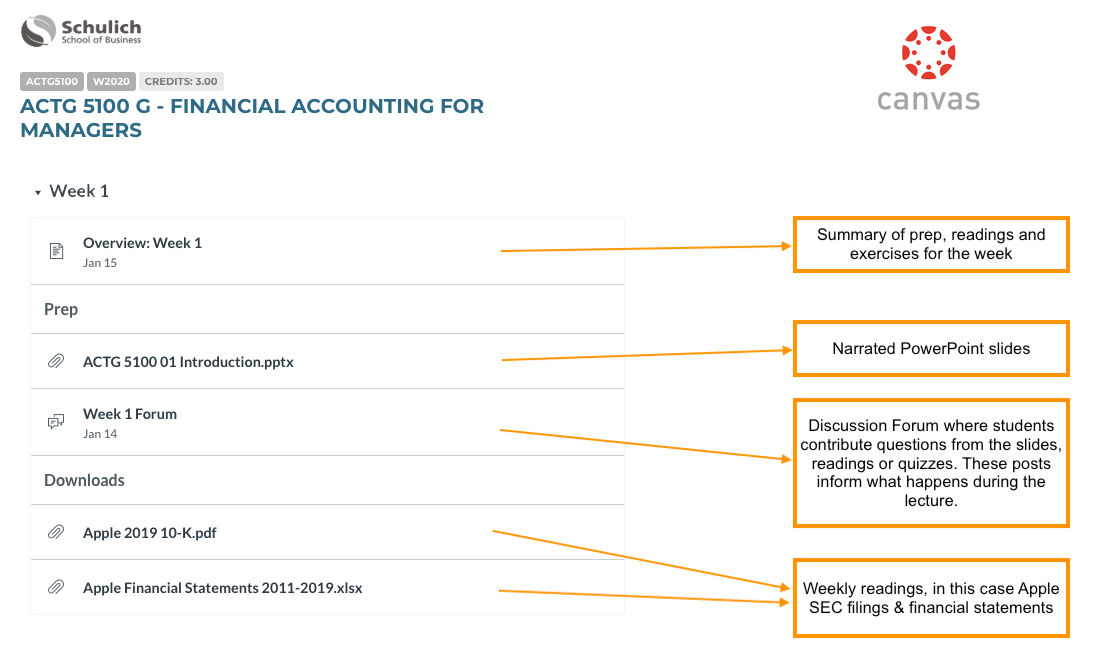By Cameron Graham, Professor of Accounting.
One of the challenges we face as Schulich instructors is shifting our students away from being passive consumers of course content. I’ve tried eliminating PowerPoint and I’ve tried using more cases. Students have still showed up to my financial accounting class unprepared, ready to take notes and wondering what will be on the exam.
With Canvas, I’ve tried a different approach to teaching, drawing on its capacity to guide students through a more extensive and in-depth preparation for each class.
Many of us have heard of, or have tried, the “flipped classroom” approach to teaching. Traditionally, teaching has involved using class time to present new material, and then assigning homework to develop the students’ mastery of the material. Flipping the classroom means having the students go through assigned course content before class, and then spending the class time doing what would previously have been considered the homework.
The challenge of this approach is getting the students to prepare adequately. It’s the same problem faced when using the case method: what do you do if all your students arrive unprepared because they were working on a big assignment due in another course?
With Canvas, what I’ve done is this. I’ve recorded PowerPoint presentations, using my touchscreen laptop and a good microphone to narrate the slides, presenting the lecture material just as I would in class. PowerPoint allows you to use a highlighter, pen, and eraser to record your visual cues, taking the place of using a laser in class to point to something on the screen. All your highlighter and pen gestures are synchronized with the recording of your voice when the presentation is played back.
The resulting PowerPoint document will be 30-50 MB in size, per hour of lecture time. This is the document that I post to Canvas at the beginning of each week of the course. The students watch the PowerPoint lecture at home (I recommend they make some popcorn first), then read the relevant textbook chapter or other assigned readings. Given that this is an accounting class with a strong web-based e-learning resource provided by the textbook publisher, I also assign a handful of challenging calculative and interpretive questions, similar to what they might see on one of my exams. These are completed on the textbook e-learning website, which for my course is not fully integrated yet with Canvas but which still works quite effectively.
Canvas and the textbook website both track student progress, so that I can see who is keeping up. I assign a portion of the class participation grade for completing this preparation.
The next big change is in how I use class time. Because students have spent time listening to my lecture already, I reduce the amount of required class attendance by 50%, dividing each class into an optional practice session and a mandatory case-based discussion session. This keeps the overall workload within Schulich guidelines, and helps students cope with their overall workload. This is important for their mental health.
Each class now consists of:
- A completely optional 80- to 90-minute practical “lab”
- A short break
- An 80- to 90-minute case study, which all students are expected to attend.
In the lab, I go through basic accounting problems without covering any new material. So far, most students have chosen to attend this part of the class. I’m not sure whether this is because of FOMO or just because they appreciate the very basic coaching that the lab gives them. In the second half of the class, we explore the financial statements of a specific company or tackle some advanced topic like nonprofit accounting, environmental reporting, or audit failure, using specific examples that help make the topic concrete. I do not post the material for the case study in advance; rather, I walk them through the case to get them quickly to the focal point, and then manage the case discussion, often using small groups to explore different facets of the case.
Students have been extremely positive about this approach to the course. For me, the biggest positive has been seeing the effect on grades. The class GPA is up by a full grade point, and the gains have all come in the bottom half of the class. In other words, the non-accounting, non-finance students are all supported in mastering the material better, at a “competent” level, which some of them failed to achieve with my previous approaches. Meanwhile, the more accounting-focused students are rewarded with shorter class time and more intense discussions of the advanced case material, because their fellow students are all better prepared.
The real benefit to me is going to be this term, when I won’t have to record any lectures. All the hard work was done last term. I can update individual slides or even replace entire lectures whenever I want, but for the most part, the lectures are good to go. I can just concentrate on connecting with the students.
Prof. Cameron Graham is the host of Podcast or Perish, a podcast about academic research and why it matters. You can find it on your favourite podcast platform and at www.podcastorperish.ca. If you have any questions about how he uses Canvas, please contact him directly at cgraham@schulich.yorku.ca.




